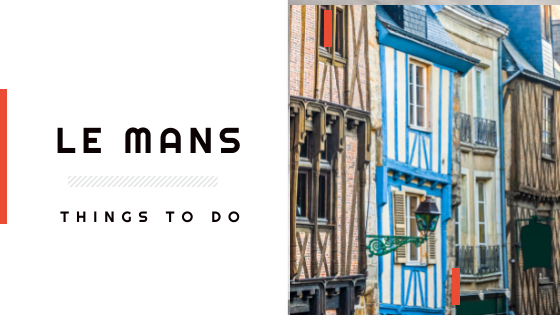

Located in the Place du Cardinal Grente, the Le Mans Cathedral is a magnificent sight. Some of the most admirable things about the enormous cathedral are the flying buttresses, beautiful stained glass windows and the centuries-old stone age menhir weathering with time just to become more beautiful.
How interesting is it to have a museum on the history of a race? 24 Hours of Le Mans museum displays the history of how it all began. In the museum, you will also see 120 vehicles out of which 40 were a part of the race in different years. Many other articles related to the competition are showcased in the museum.
Now comes the feature that makes Le Mans famous for all the right reasons, the Circuit of 24 hours. The 24 hours’ race started in 1923, which became a passion for real motorists around the world. The 24 hours’ race is a test of skills and patience. You can visit the circuit even if you are not a racer as some of the roads are open for the general public.
Between the river and the Le Mans Cathedral, you will see the old Gallo-Roman walls. Only 500 meters of the 3rd-century wall is left, and it will not fail to amaze you. The walls were made by using red brick, limestone, pale pink mortar and sandstone. Different pattern on the wall makes it even more admirable.
Le Mans light ups when seven main monuments of the city are struck with lights and colours to display different themes and images such as zodiac signs, angles, beasts and other mythological characters. The show is presented from Tuesday to Saturday.
The house of Plantagenet (cité Plantagenêt) ruled England for more than 300 years, and the city decided to own it proudly by renaming the old quarter in the name of Plantagenets. House of Plantagenêt offers beautifully preserves cobblestone streets, timber-framed houses and publically owned mansions giving you a chance to live the ancient times.
Le Mans also has a fine arts museum displaying art and archaeological pieces from the past. You can see articles from as old as 6000 years ago. The painting gallery of musée de Tessé contains artwork of various artists like Bartolomeo Bulgarini and Camille Corot.
The Abbey was founded by Queen Berengaria but little did she knew that she would eventually be buried here after her death. Abbaye de l’Epau dates back to the early 13th century. Unmissable details of the architecture of this Cistercian Abbey will not fail to amaze you.